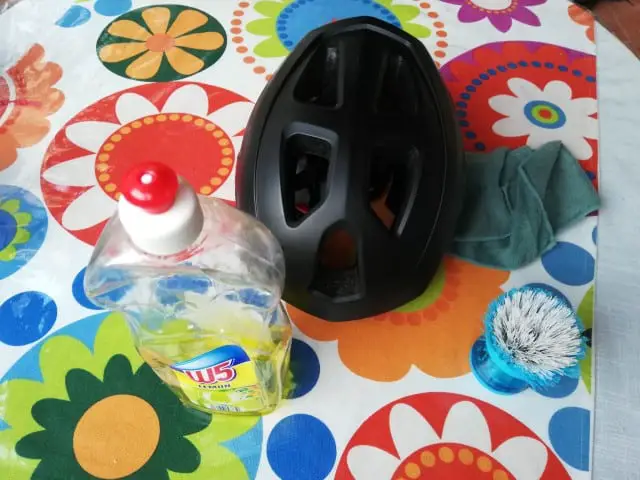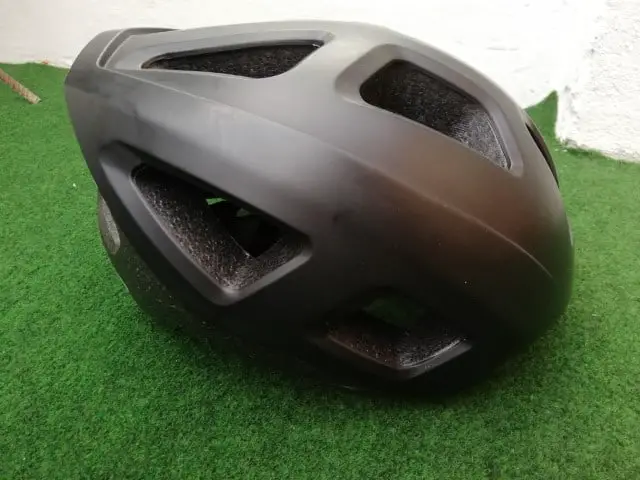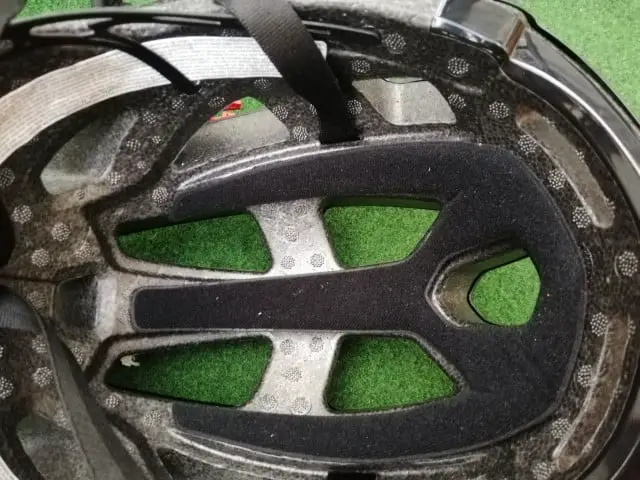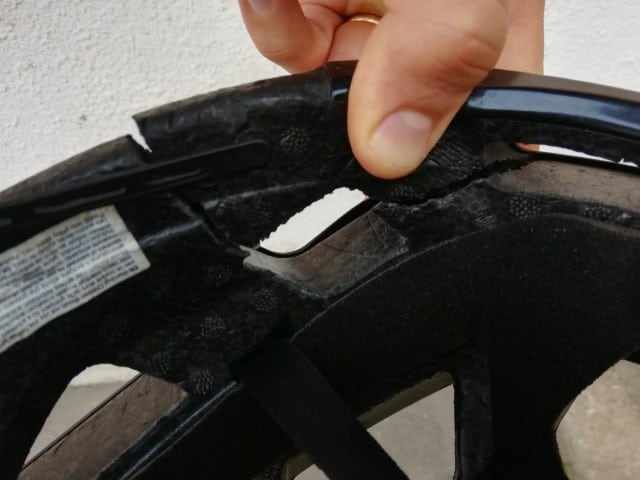The other day I was caught in a heavy storm and rode home in a downpour. When I removed my helmet and hung it out to dry, I realized how dirty it was. I wanted to clean it to make it look and smell new again. But how do you clean a helmet?
To properly clean a helmet, you need to clean the outer shell with a rag, the inner part, and the straps with a brush and soapy water. The pads can be removed and washed in the washing machine. Here are some dos and don’ts when it comes to cleaning a helmet to make it look like new again.

Four parts
Most helmets are made up of three parts: an outer shell, a light, but durable foam part of some sort, and inner padding.
The outer shell is a thin shiny or matte plastic layer that protects the thicker, but softer part of the helmet from scratches, scuffs and dents.
Electric bikes built for everything and priced for everyone. Shop Rad Power Bikes, America's #1 electric bike brand. Get out. Go further. Ride Rad.
To keep this plastic good looking use a rag, preferably microfiber cloth to avoid scratches, to remove any dirt. If the dirt doesn’t come off easily, you can use warm, soapy water, and if necessary, you can leave it soaking for some time.
The thick middle part of the helmet is it’s main part, and it’s made of a special type of foam called expanded polystyrene (EPS). Disposable cups and food containers are made of the same material but they are thinner and of a lower quality. This is the part that absorbs the shocks in a crash and protects your head.
This part is usually not too exposed to the elements and it’s not in direct contact with your head so it tends to stay relatively clean. However, when it gets dirty, this is the hardest to clean, because of the holes and small cavities it has. You can use warm soapy water and a brush with a small head to clean this part.
The straps are made of nylon and they can also be cleaned with warm soapy water. Since the straps are in direct contact with your head, you should pay special attention to washing them thoroughly, especially if you feel that they retain odor from absorbing your sweat.
The inner padding is removable in most helmets, and attaches to the foam with a velcro. The problem with these pads is that they are made of sponge so they soak up all the sweat and moist in the helmet and can become quite smelly over time.

Once removed, it can be put in the washing machine with other clothes and it will come out nice, clean and smelling fresh. Since it is a material that contains polyester, it should be washed at a temperature less than 104F (40C) to avoid shrinking.


Can chemicals damage a helmet?
Water-based cleaners such as dishwashing soap or shampoo won’t damage your helmet even if applied generously and extensively. Petroleum-based solvent cleaners can cause damage to your helmet because they come into reaction with the EPS foam, which the thick main part of the helmet is made of and should not be used.
The helmet be submerged in the water?
You can submerge your helmet in water, but keep in mind that the outer shell is attached to the foam liner with glue. You shouldn’t keep the helmet submerged in hot water for an extended period of time because it can loosen the glue.
Washing a helmet in the sink
Fill a sink with warm or lukewarm soapy water and use a rag and a sponge or a brush to wash the helmet. When you are done with the inner part clean the straps with a toothbrush. Pour some of the soap on the brush and scrub the strap. Once finished, rinse and you are ready to go.

In the shower
Some people simply wear the helmet to the shower and wash it while having a shower. Shampoos and shower gels won’t harm the helmet, but you won’t be able to give it such a good thorough clean in the shower cabin. If you choose this method, use a sponge to try to be as detailed as possible.
In the dishwasher
Some have tried washing the helmet in the dishwasher and have been pleased with the results.
I am not really sure if this will not damage the helmet as the water the dishwasher uses is usually hot, and it may weaken the bond of the glue.
Also, I have some reservations about the hygiene of this solution, but your mileage may vary. If the helmet is particularly dirty, I recommend that you rinse it first. And please, don’t wash your helmet together with the dishes.
Can water damage the MIPS or the retention system of the helmet?
Some helmets offer extra safety to decrease the risk of concussion or head injury in the event of a crash using MIPS technology (Multi-directional Impact Protection System). This consists of an inner layer fixed to the head of the rider.
Every helmet (even those without MIPS technology) has a retention system, which is the way the helmet is secured to your head. The most common retention system is a wheel on its back to tighten it, combined with the strap and a buckle that fastens under your chin.
The added security systems and the various retention systems are all designed in a way that they can get wet. They don’t have any parts that water causes damage to, and they don’t rust.
Even helmets with MIPS technology can be washed.
How to get rid of the odor?
Sometimes the odor can be hard to eliminate with just water and soap, and even washing may only give you a few ‘fresh rides,’ and the odor will come back.
This is similar to body odor, and it is caused by a bacteria that metabolizes sweat when you wear the helmet.
You can leave the padding soaking in soapy water for hours and even a day.
If the smell still remains, you can use an age-old household trick that works really well.
White vinegar is an effective way of removing stubborn odors from the helmet. Mix white vinegar with water in a 1:10 portion and use it to wash the helmet with it. For some time after washing, you will feel the smell of vinegar, but it will vanish in a couple of hours.
Protect your helmet from sweat
Some people sweat more than others.
A good way to reduce sweat is by choosing a helmet that offers good ventilation.
Commuter helmets and helmets designed for city use offer poor ventilation. Helmets designed for use on road bikes ventilate much better and still offer plenty of protection. The only difference is the design, not the safety.
If you still sweat a lot, you can use a cycling cap or a headscarf that soaks up the sweat and the moisture. My brother, who sweats easily uses a headscarf designed for sports because he prefers washing that once a week and keeping the helmet clean.
A pro tip
Inspect your helmet every time you clean it!
Helmets don’t last forever, and you should inspect yours regularly. If there is any major crack, dent or cut on it, don’t save money by not buying a new helmet. The dents decrease the energy absorption, and they reduce the amount of protection it can offer in the event of a crash.
When cleaning your helmet, it is a good habit to perform a thorough inspection to detect even early signs of wear.

If you see several smaller dents, it is time to replace the helmet, especially if you do not know how, when, and what exactly happened to it. You can only see the surface, and you may not notice that the inner structure is compromised. A bad helmet can cause more harm than good.
Happy Riding!
